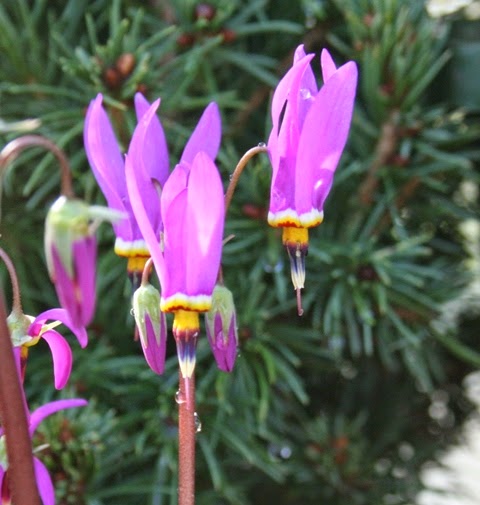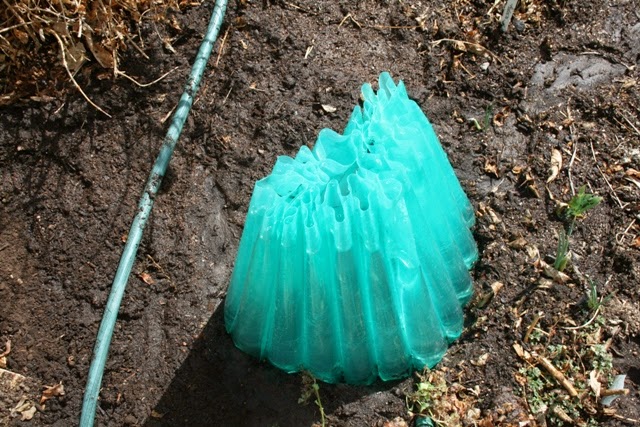Early spring is a great time
to add some color to your garden. Here are four plants which are blooming now,
just in time to compliment your daffodils and crocus blooms.
One thing these plants have in common is their need for soil that drains well. As with any planting, it is important to take the time to amend the soil. Adding peat moss and compost to the ground before you plant helps your new plantings root and thrive. You can also add some Bone Meal to the bottom of the planting hole to give your new plantings a boost. Rocky Mountain Columbine 'Swan Pink & Yellow'. Columbine grow well in partial shade and soil that drains well. Speaking of columbine, don’t over look 'Cameo® Blue and White' for beautiful blue colors. Lenten Rose 'HGC Pink Frost' Hellebores are easy to care for. They like well-drained soils and will do okay in slightly alkaline soil. If you’re looking for a shade-loving plant, this is a good choice. Helleborus x ballardiae. Dodecatheon meadia is a member of the primrose family and will do well in sun to partial shade. 'Shooting Star’ Lewisia is a selection of a native American plant. Lewisia thrives in well-drained soil and can be planted along borders, in rock gardens or in terracotta pots. 'Elise Mix'
One thing these plants have in common is their need for soil that drains well. As with any planting, it is important to take the time to amend the soil. Adding peat moss and compost to the ground before you plant helps your new plantings root and thrive. You can also add some Bone Meal to the bottom of the planting hole to give your new plantings a boost. Rocky Mountain Columbine 'Swan Pink & Yellow'. Columbine grow well in partial shade and soil that drains well. Speaking of columbine, don’t over look 'Cameo® Blue and White' for beautiful blue colors. Lenten Rose 'HGC Pink Frost' Hellebores are easy to care for. They like well-drained soils and will do okay in slightly alkaline soil. If you’re looking for a shade-loving plant, this is a good choice. Helleborus x ballardiae. Dodecatheon meadia is a member of the primrose family and will do well in sun to partial shade. 'Shooting Star’ Lewisia is a selection of a native American plant. Lewisia thrives in well-drained soil and can be planted along borders, in rock gardens or in terracotta pots. 'Elise Mix'



































